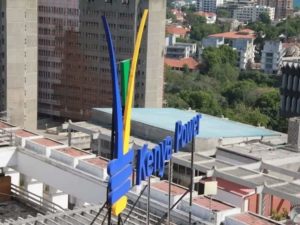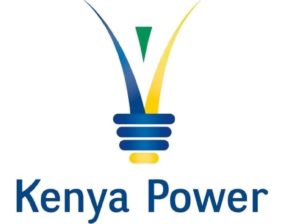The Kenyan Treasury has offered a 7.05 billion Kenyan Shilling subsidy to Kenya Power and Lighting Company, which is more commonly known as Kenya Power or KPLC in order to make it possible for the electricity distribution company to reduce the consumer electricity bills by an additional fifteen (15) percent without the move affecting its cash flows.

The Budget Committee of the National Assembly made the multi billion Kenyan Shilling subsidy known to the public through a report to lawmakers after Independent Power Producers (IPPs) resisted the move for them to slash their tariffs which would subsequently result in the Kenya Power And Lighting Company (KPLC) reducing consumer bills.
In January of 2022 the Kenya Power And Lighting Company (KPLC) reduced their retail tariffs by fifteen (15) percent in a bid to try to reduce its system losses that is, the portion of electricity purchased from generators like the Kenya Electricity Generating Company PLC (KenGen) that does not get to businesses and homes as a result of leakages from the network as well as theft.
Read Also: KPLC To Benefit From 86.95 Billion Kenyan Shilling Government Loan
The Kenyan government also pledged a similar slash in a move based on the review of Power Purchase Agreements (PPAs) following a discovery by a task force set up by President Uhuru Kenyatta that there was a large inconsistency between the tariffs charged by private power generators and the Kenya Electricity Generating Company PLC (KenGen) which is the main electricity producer.
Although there was a second slash planned for the 1st of April 2022, the Independent Power Producers (IPPs) which are owned by powerful establishments like the World Bank for instance, resisted the unilateral push to reduce the costs at which they provide electricity to the Kenya Power And Lighting Company (KPLC).

The Kenyan Government has now decided to provide subsidies to the Kenya Power And Lighting Company (KPLC) so as to aid the occurrence of lower bills which will protect consumers who are already battling increasing prices in essential items like foodstuffs and also appease the public outcry about the current high cost of living.
In May of 2022 inflation in Kenya hit a twenty seven (27) month high of 7.1 percent, putting a further strain on the budgets of households as well as the demand for services and goods.
The Budget and Appropriations Committee stated that, “To shield KPLC from the effects of the electricity price reduction prior to the implementation of this second phase, the company has been allocated Sh7.05 billion in the proposed budget for 2022/23.”
Read Also: IPPs Want Electricity Auctions
It added that, “There is slow progress in implementing the recommendations of the Presidential Taskforce Report on the review of the power purchasing agreements (PPAs) to reduce electricity prices by 33 percent.”
It is believed that the worry concerning the possibility of legal back and forths with the influential foreign investors, resulted in the Kenyan government to choose a negotiated deal with the Independent Power Producers (IPPs).

OrPower 4 Inc which is part of the Electric Power Generation, Transmission and Distribution Industry and documents disclosures at the United States (US) Securities Exchange revealed that the Kenyan government has opted to go over the new power purchase deals as opposed to renegotiating the ones already on ground.
OrPower 4 Inc a company which has the biggest private geothermal operator in Kenya and is a listed power utility company, was reportedly offered 9.05 billion Kenyan Shillings in a bid to reduce losses from the first cost slash in January of 2022. This resulted in the Kenyan government’s subsidies hitting 16.1 billion Kenyan Shillings in the year leading to December.
Read Also: 135 Million Kenyan Shillings Awarded To Former Kenya Power Employees
Kenya Power And Lighting Company (KPLC)’s sales in electricity for the year ending in June of 2021 hit 125.8 billion Kenyan Shillings meaning that a thirty (30) percent slash would be 37.5 billion Kenyan Shillings.
What this means is that the subsidy by the Kenyan government is an equivalent of forty three (43) percent of the expected revenue losses.

The reduced prices in electricity are intended to encourage the growth of the Kenyan economy through ensuring that the energy costs are competitive especially when compared with other countries in Africa like Egypt, Ethiopia, and South Africa.
In recent years, the government in Kenya has been making a number of efforts aimed at improving the level of foreign investment specifically in the manufacturing sector.
The fifteen (15) percent slash which was implemented in January of 2022 resulted in the cost of purchasing 200 units of electricity for example, reducing from 5,185 Kenyan Shillings in December of 2021, to 4,373 Kenyan Shillings by February of 2022.
The Kenyan government is looking to implement similar cost slashes in Phase Two of the review.
Read Also: Kenya Set To Benefit From 10.2 Billion Kenyan Shilling EU Geothermal Power Fund
Consumers who utilize electricity usually express their displeasure over high electricity bills which have to a certain extent been as a result of inert capacity charges that remunerate power generators for the electricity that gets generated, but ends up not being used.
In a quintessential Power Purchase Agreement a power producer gets paid for any and all electricity produced, even during times when it is not possible for the Kenya Power And Lighting Company (KPLC) to sell said electricity to their consumers.
The cost of electricity, remains a very important factor with regards to securing new investments in the country.
Since the year 2013, the prices of electricity in Kenya have almost doubled. In July of 2013, 50 units of electricity stood at 508 Kenyan Shillings. By December of 2021 it hit 945 Kenyan Shillings for 50 units, before dropping to 769 Kenyan Shillings in February of 2022.

The Kenya Power And Lighting Company (KPLC) purchased 41.1 billion Kenyan Shillings or forty six (46) percent of its electricity from the Kenya Electricity Generating Company PLC (KenGen) which is owned by the Kenyan government. The other top electricity producers are OrPower 4 Inc which is a United States (US) based geothermal company and the wind plant; Lake Turkana Wind Power.
Over half of the Kenya Power And Lighting Company (KPLC)’s 89.1 billion Kenyan Shilling power purchase costs are in capacity charges which are paid to power producers.
Read Also: Mobile Call Rates Reduced By Communications Authority of Kenya
The Independent Power Producers (IPPs) continue to fight the reduction stating that the country does not have any unilateral right to change the contracted payments and capacity adding that the Kenyan government, is duty bound to protect the Power Purchase Agreements (PPAs) which are valid for a period of twenty (20) years.
The Independent Power Producers (IPPs) also believe that they have already spent billions of Kenyan Shillings on constructing power plants via a combination of shareholder funds and debts that were received based on either wholesale electricity tariffs or Power Purchase Agreements (PPAs).
How informative was this particular article? Are there any other news topics, categories, or How To topics, that you would like us to write on? Feel free to reach out to Nexbit KE in the comment section.


